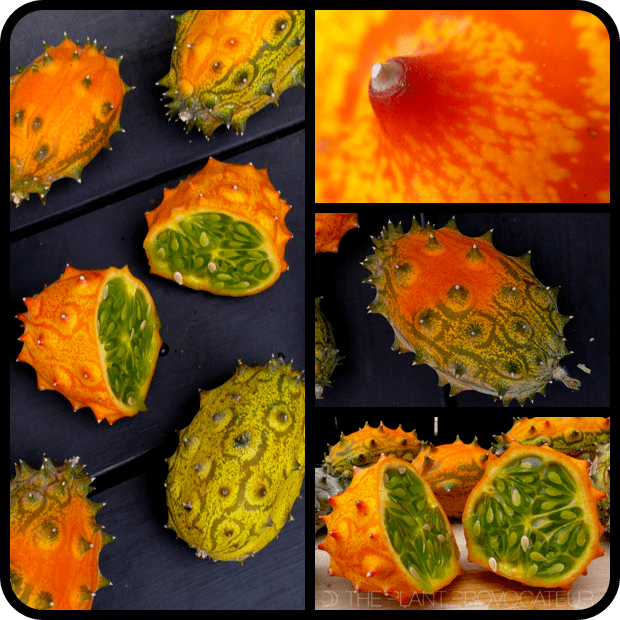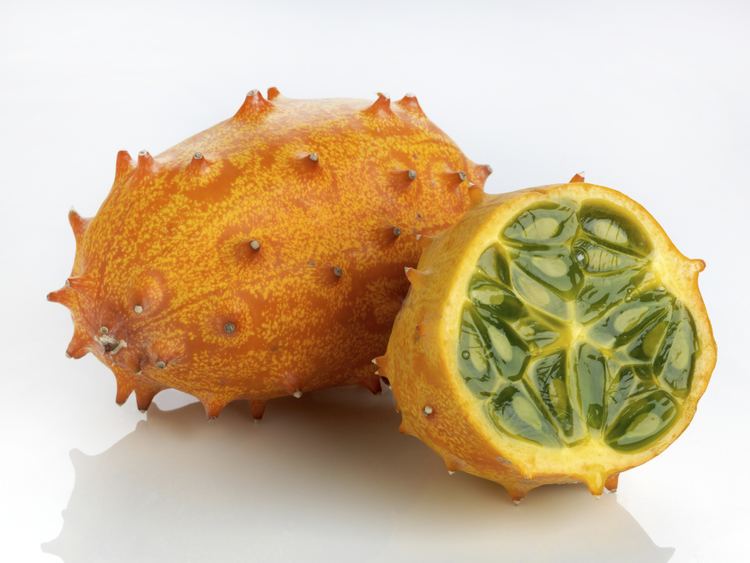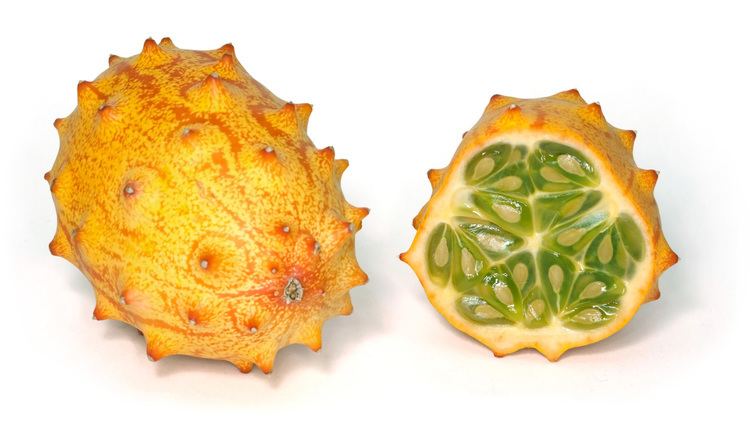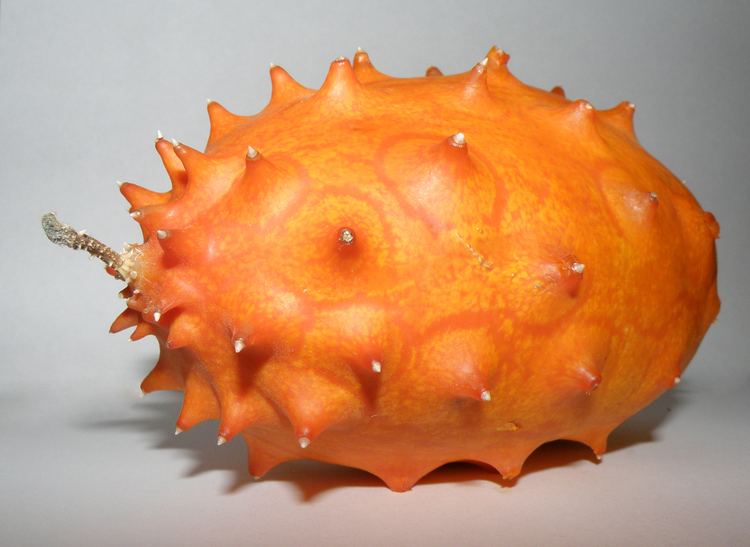Species C. metuliferus | ||
 | ||
Similar Pitaya, Rambutan, Tamarillo, Carambola, Kumquat | ||
Micro ct scan of a kiwano fruit cucumis metuliferus
Cucumis metuliferus, horned melon or kiwano, also African horned cucumber or melon, jelly melon, hedged gourd, melano, is an annual vine in the cucumber and melon family, Cucurbitaceae. Its fruit has horn-like spines, hence the name "horned melon". Ripe fruit has yellow-orange skin and lime green, jelly-like flesh with a tart taste, and texture similar to a cucumber. C. metuliferus is native to Sub-Saharan Africa. It is now grown in the United States, Portugal, Italy, Germany, Chile, Australia, and New Zealand.
Contents

C. metuliferus is a traditional food plant in Africa. Along with the Gemsbok cucumber (Acanthosicyos naudinianus) and Tsamma (Citron melon) it is one of the few sources of water during the dry season in the Kalahari Desert. In northern Zimbabwe it is called gaka or gakachika, and is primarily used as a snack or salad, and rarely for decoration. It can be eaten at any stage of ripening, but when overripened, will burst forcefully to release seeds.

The fruit's taste has been compared to a combination of cucumber and zucchini or a combination of banana, cucumber and lemon. It is also said to taste like an unripe, watered-down banana. A small amount of salt or sugar can increase the flavor. Some also eat the peel, which is very rich in vitamin C and dietary fiber. The fruit can be used in cooking, but when eaten raw, most suck out the pulp and spit out the seeds.

Despite the fruit's colorful appearance, it has not found any significant uses in Western cuisine, and has been called "astringent", and the prices "exorbitant".
Germination
Seeding optimum germination temperatures are between 20° and 35°C (68° to 95°F). Germination is delayed at 12°C (54°F), and inhibited at temperatures lower than 12°C or above 35°C. Thus, it is recommended to sow in trays and transplant into the field at the two true leaf stage. The best time for transplanting into an open field is in the spring when soil and air temperatures rise to around 15°C (59°F).
Pests and diseases
It was found that kiwano is resistant to several root-knot nematodes, two accessions were found to be highly resistant to Watermelon mosaic virus (WMV-1), but very sensitive to the Squash mosaic virus (SqMV). Some accessions were found to succumb to Fusarium wilt. Resistance to Greenhouse whitefly was reported. Kiwano was reported to be resistant to Powdery mildew, however in Israel powdery mildew as well as the Squash mosaic virus (SqMV) attacked kiwano fields and measures had to be taken.
